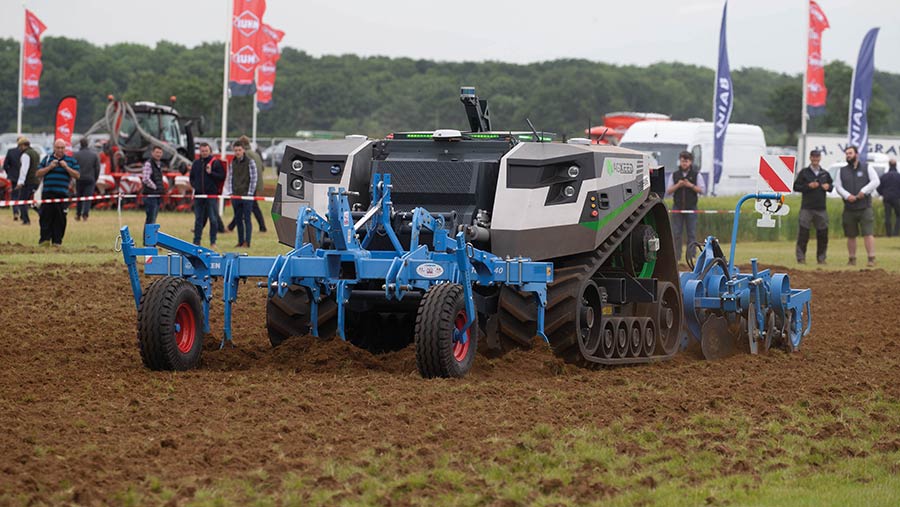Video: Dutch 156hp robotic tractor launched at Cereals 2021
 © Tim Scrivener
© Tim Scrivener A Dutch-developed robot that can operate a range of farm machinery implements without a driver is set to be commercially available in the UK, helping farmers improve soil health by lessening compaction.
Developed by Netherlands-based robotic company AgXeed, the AgBot comes equipped with a 4.1-litre four-stroke 156hp Deutz diesel electric engine.
It features a 350-litre diesel tank, has a top speed of 13.5km/h and is controlled with just a couple of clicks. It can work for 20 hours straight, carrying out tasks such as cultivating and drilling.
See also: Video: The world’s first robotic weed mapping service
The machine will ultimately enable farmers to increase productivity through optimised route planning. and eliminate the need for drivers working long hours doing monotonous tasks, freeing up time for important farm management decisions.
The machine
AgXeed engineer Joris Hiddema says the machine’s 6t empty weight reduces soil compaction, with just 0.2kg cm/sq m exerted on to the soil compared with a tractor at about 1.6kg cm/sq m.
Five different track widths are available, ranging between 300-910mm, with variable track width adjustments of 1.8-3.2mm.
The autonomous vehicle also features load-sensing hydraulics and a standard three-point linkage with a rear lift capacity of 8t and front lift of 3t.
Optionally available is an electric PTO (up to 100kW and 700V), and external high-voltage connections (up to100kW and 700V) based on Isobus 11783.
The electric equipment includes all the technology required for hazard and obstacle detection, in addition to an RTK steering system for routing and positioning.
Data portal
Marketing manager Phillip Kamp says users can select all the standard tractor settings via the data portal and alter them while the robot is is the field – whether this is setting up headlands, machine speed, or hitch control.
The robot also features a safety Lidar sensor which creates a 3D image of the surrounding area that can identify any potential obstacles which require the machine to stop. This technology is set to be developed further to allow data collection on crop height and biomass, allowing farmers to make more informed decisions on crop production and yield potential.
The AgBot is set to become commercially available next year, but supply will be limited.

